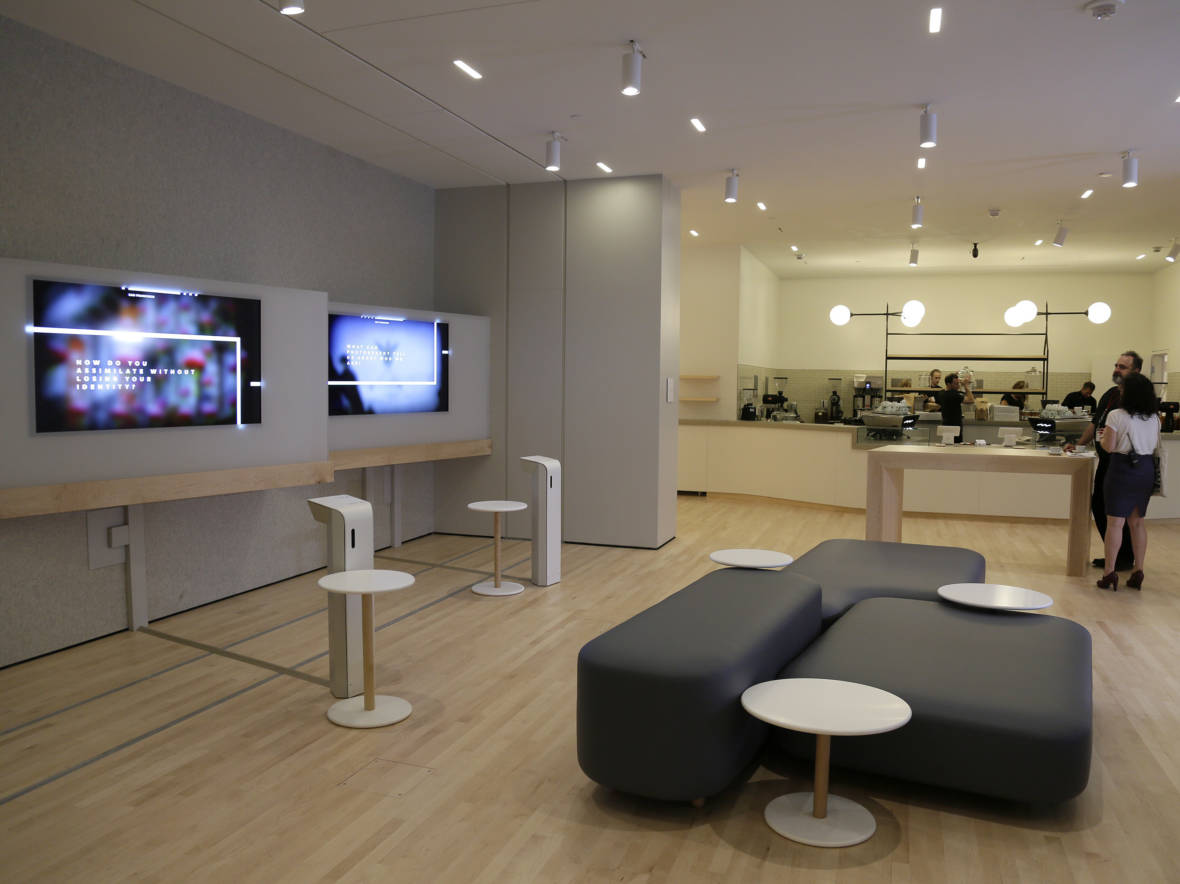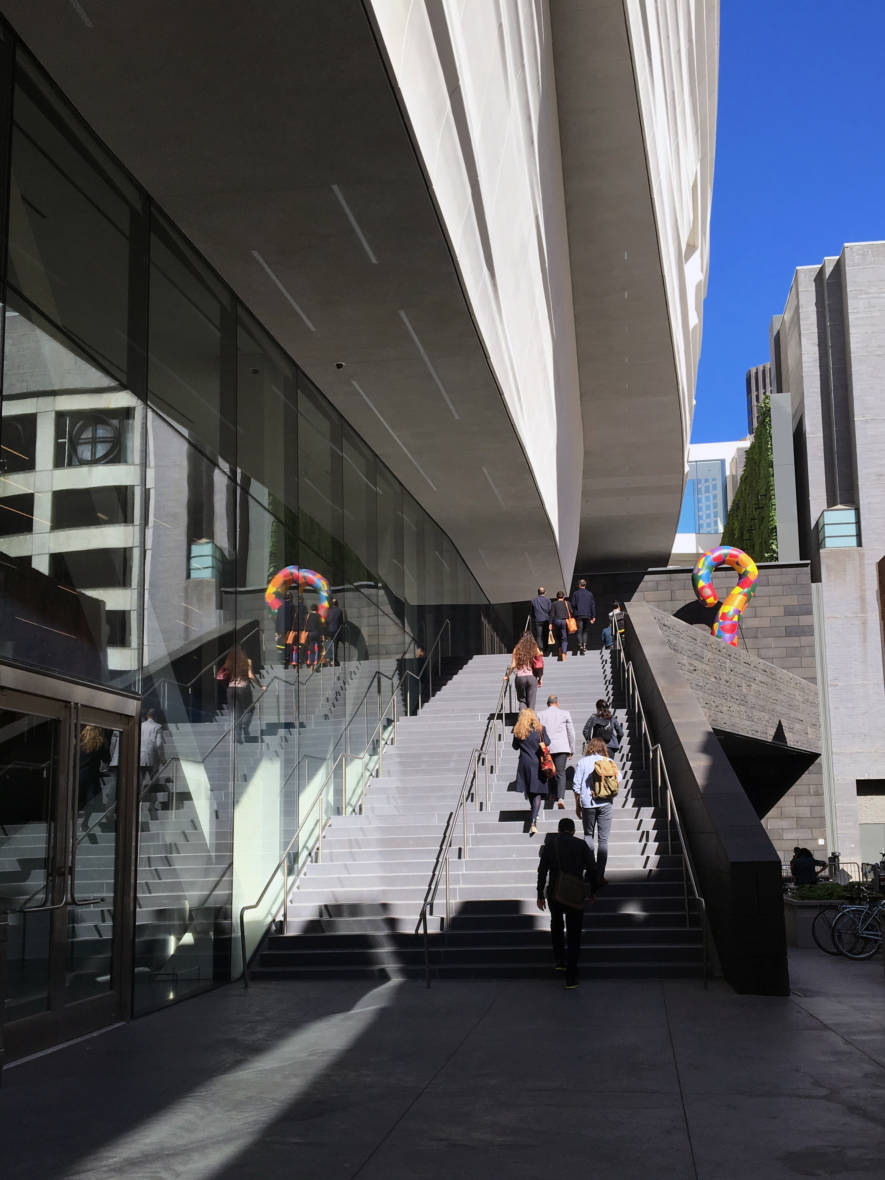Looking at art is the core museum experience. I remember, when I was a kid, seeing Van Gogh’s Starry Night for the first time. I stood for what seemed like hours, staring at the thick paint and swirling colors in a quiet gallery at the Museum of Modern Art in New York.
But San Francisco is not just any city. “Silicon Valley, San Francisco, is a place of innovation, and so we feel quite a strong pressure to play a role in that in the museum space,” says Keir Winesmith, head of Web and digital platforms at the San Francisco Museum of Modern Art.
The museum reopened this weekend after a three-year closure to build an addition. Its expanded collection includes works by modern icons such as Andy Warhol, Mark Rothko and Richard Serra, and some new interactive technology. And like a growing number of museums, the San Francisco MOMA hopes the new tech doesn’t get in the way of looking at the art.

Winesmith gave me a walk-through of new technological features in this museum in the heart of downtown San Francisco. Most of the experiences are outside of the galleries — interactive touch screens to tell you more about what you just saw.
Within the galleries themselves, how much tech to use has been an ongoing question, Winesmith says.
“Most museums, especially art museums, are trying to balance this intent that they have about creating a really quiet or an engaged, almost religious commune with the art — with this real strong need to be relevant to modern audiences, to millennial audiences, to attract new audiences,” he says.
And Winesmith says they built an app for that. You can download it to your own phone.
At first it may seem like a creative take on traditional museum tours narrated by a variety of people, including one by the high-wire artist Philippe Petit.
The guide will tell you to turn left, or right, or go up the stairs to find a particular work of art or a collection. But it won’t start telling you about the art until you’re right in front of it, because the GPS is accurate enough to know your precise location.
“We described it as an eyes-up experience, a phone-in-pocket experience,” says Winesmith. “So, really, we wanted the device out of people’s hands because we want people not playing on their devices when they’re in the museum.”
Other museums are more cautious about introducing digital technology into the galleries, even here in the heart of Silicon Valley.

Connie Wolf, the director of the Cantor Arts Center at Stanford University, is taking a cautious approach. “In our busy lives, in our crazy lives, we’re always connected to technology,” she says. “People want to come into museums and put that technology aside for a moment.”
The Cantor does hand out some very old technology: packages of colored pencils and sketching paper for students and families. “You can walk through our museum at any point and there’s some kid lying on the floor looking at a work of art and drawing,” Wolf says. “And there’s no better way to experience art than to really be active in looking.”
Still, she says, they don’t ban mobile devices from the galleries. People are allowed to take photos, including selfies. When they share the photos, it’s great publicity for the museum.
For some museums, even photography is too much.
Kate Levin at Bloomberg Philanthropies oversees a program that has handed out $83 million to museums — including SFMOMA — to experiment with ways that technology may help enhance the museum experience. She says some institutions have even found photography and selfies a little dangerous.
“It wasn’t just that everybody trying to look at a work of art had to brave a thicket of cellphones,” says Levin, “but that to get the good shot, people were starting to back up into each other and into the furniture.”
As SFMOMA opens its doors to the public, Winesmith says, museum officials are nervously waiting to see what happens. In tests, people still looked down at the app.
“There’s something about that beautiful shiny screen that’s so attractive,” Winesmith says. “People still have that phone out and are still looking down a lot more than we’d like.”
9(MDAxOTAwOTE4MDEyMTkxMDAzNjczZDljZA004))